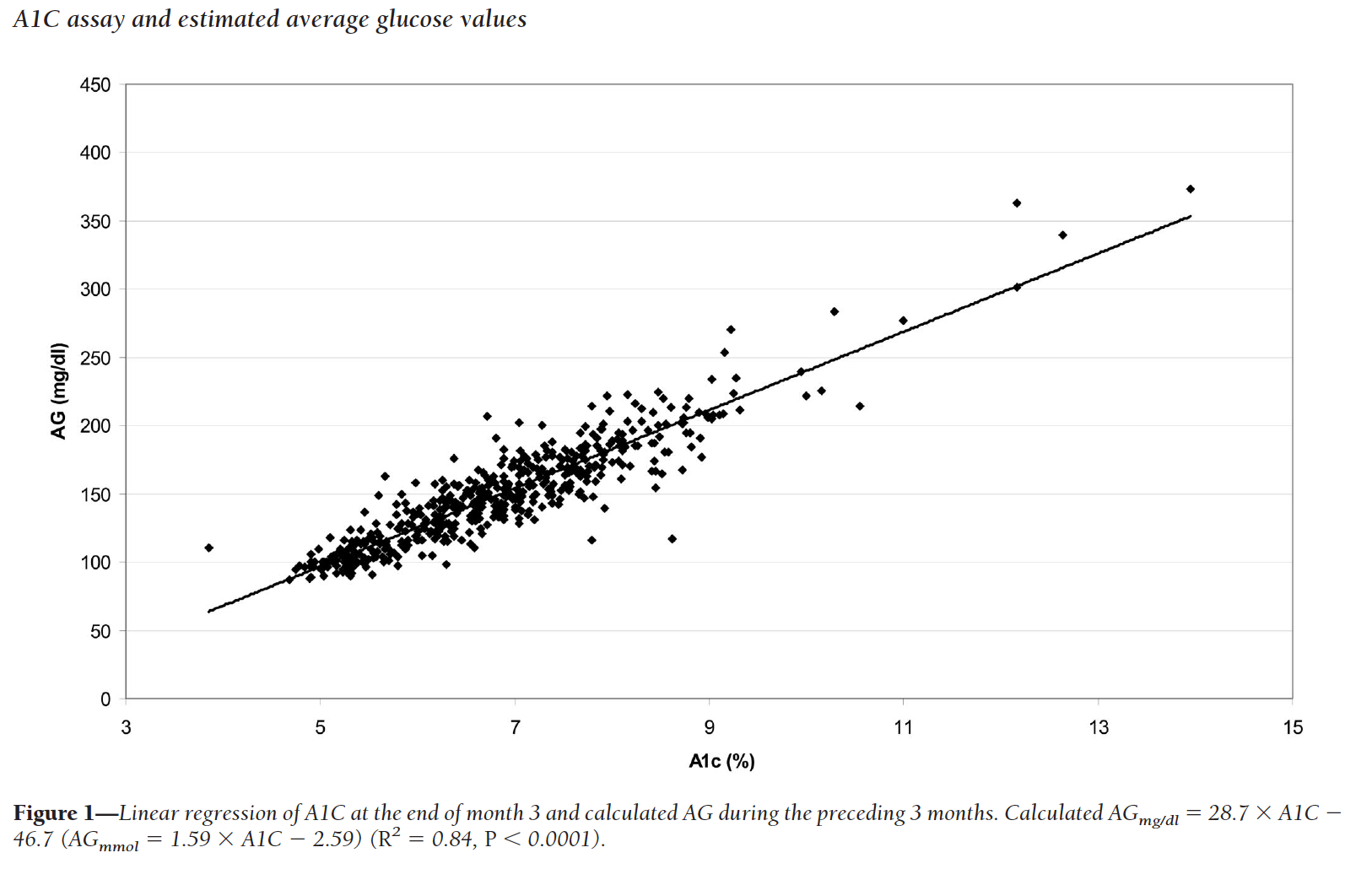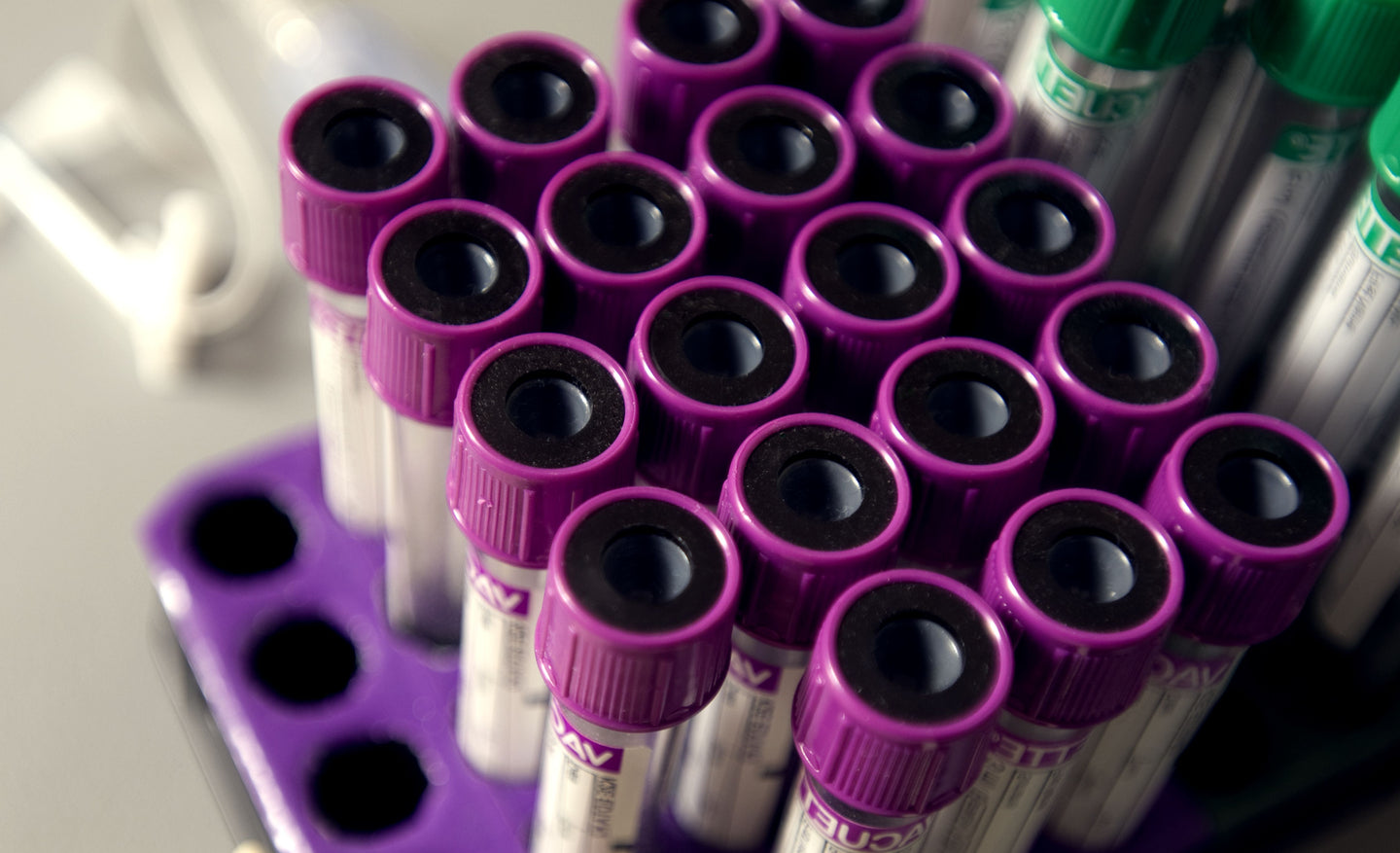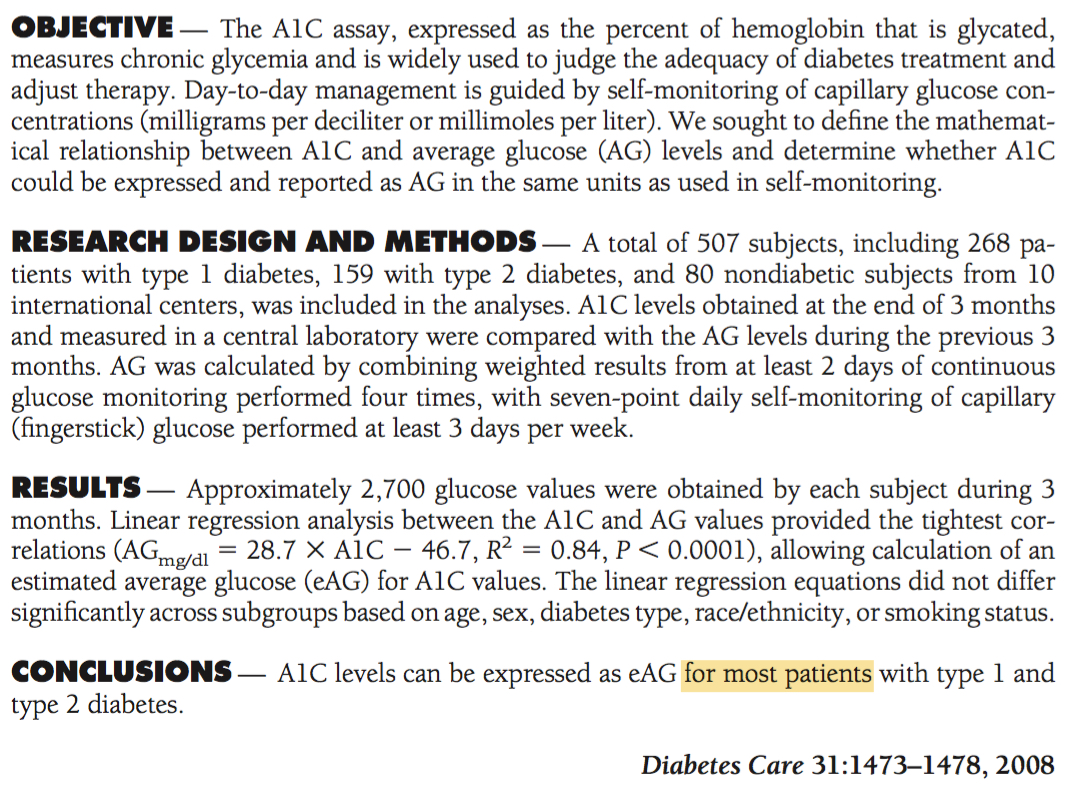Updated 8/11/22
Read time: 7 minutes
- The relationship between average blood sugar and A1C isn’t as clear as many of us think. For example, you might have a normal A1C, but high fasting glucose.
- One way to increase how closely your average blood sugar aligns with your A1C is to check your blood sugar levels more regularly.
- Individual variations in hemoglobin and differences in red blood cell turnover can impact A1C results.
You test your meter for accuracy and everything looks good. You take your average blood sugar and convert it to A1C using a table, calculator, or equation you find online. Then, you get your blood work results and learn that your actual A1C is not even close to what you were estimating.
What is the deal? It turns out, the relationship between average blood sugar and A1C isn't as clear as most of us think.
Here are some reasons why someone's actual A1C may be higher or lower than expected or why you might have a normal A1C, but high fasting glucose.
Why Use A1C?
First, let's briefly go over why A1C is used to approximate average blood sugar over two to three months:
- As glucose enters your blood, it attaches to a protein in your red blood cells called "hemoglobin."
- Hemoglobin is the same protein that carries oxygen in your bloodstream. It's what gives blood its red color
- A1C measures the percent of red blood cells with glucose attached to the hemoglobin.
RELATED CONTENT
The Ultimate Guide to A1C
Why Doesn't My A1C Match My Average Blood Sugar?
1. A glucose meter average does not usually reflect the average over a full 24 hours
If you are not on a CGM, it's tough to get a full picture of your average blood sugar throughout the day. We generally check much more during the day than at night, and nighttime glucose values may be very different from daytime values.
We also tend to test more often before eating (when blood sugar levels are typically lower), and less often after meals (when blood sugar levels are typically higher).
So, for many people, a blood glucose meter average doesn't accurately reflect average blood sugar over a full 24 hours. A1C, on the other hand, does.
If you want your meter average to better reflect your A1C values, check more often. And make sure you check at various times throughout the day, including one to two hours after eating. And be sure you are comparing the same timeframes measured in your glucose meter reports to the timeframe your A1C is measuring (i.e. the three months prior to the date of your A1C test).
2. The correlation between A1C and estimated average blood glucose is not perfect.
Most (if not all) average blood sugar to A1C conversion tables and calculators use the below equation to estimate average blood glucose from A1C:
Estimated Average BG (mg/dL) = 28.7 X A1C (%) - 46.7
This equation is based on data from a study of over 500 subjects (268 T1Ds, 159 T2Ds, and 80 non-diabetics) at 10 international centers around the world. The A1C values were measured in a central laboratory, so differences in laboratory method or technique were not a factor.
People were studied for 12 weeks, with two days of CGM and three days of 7-point glucose profiles each week. The BG meters used were carefully standardized and calibrated.
The graph below shows the data used to derive the relationship between average glucose and A1C. As you can see, there is a lot of scatter.
A number of data points are off the trend line by ± 1%. For some A1C values, the spread is more significant. Notice the range of A1Cs for people with an average glucose of ~110 mg/dL—it goes from below 4% to almost 9%.
Importantly the study concluded that the equation could be used to convert A1C to estimated average blood glucose values for "most patients." Not all patients.
 Results of a study of 507 subjects. Published in Diabetes Care 31:1473-1478, 2008.
Results of a study of 507 subjects. Published in Diabetes Care 31:1473-1478, 2008.
It should be noted that this formula was meant to provide an estimated average glucose based off a lab-calculated A1C. It wasn’t created to work in reverse by providing an estimated A1C based off average glucose readings from periodic at-home blood sugar checks. As previously stated, the average blood sugar on your glucose meter likely doesn’t accurately reflect your true, 24-hour average blood sugar. This is why you might have a normal A1C, but high fasting glucose.
3. Hemoglobin and red blood cell characteristics can vary from person to person.
Genetics can impact both the type and behavior of hemoglobin. Some people have less common types of hemoglobin, called hemoglobin variants. Although most A1C tests in the U.S. now account for the most common types of hemoglobin variants, there are still variants that can impact accuracy of some A1C tests.
The rate that glucose attaches to hemoglobin may also impact A1C accuracy.
For some people, glucose attaches to hemoglobin very quickly, which may cause an A1C result to be higher than expected when compared with true average blood sugar.
For others, glucose attaches to hemoglobin more slowly and may cause an A1C result to be lower than expected.
4. The rate of red blood cell turnover varies from person to person.
Anemia, some blood disorders, advanced liver disease and kidney disease, spleen damage and pregnancy can all cause changes to red blood cells that impact A1C accuracy. Certain medical treatments like some opioid medications and HIV medication can also make A1C results less aligned with actual average blood sugar.
Other Factors Related to A1C Levels May Play a Role
If there's reason to believe that your A1C isn't a good proxy for blood glucose, you and your healthcare team should not base your diabetes management plan on your A1C.
Instead, your plan should ideally be based on your CGM average and glycemic variability patterns.
Bottom Line About Average Blood Sugar and A1C
Your average blood sugar is not really intended to predict your A1C.
Rather, A1C is intended to provide a way to estimate your average blood glucose over time. A1C should always be considered in the context of your clinical history and alongside your self-monitoring data.




